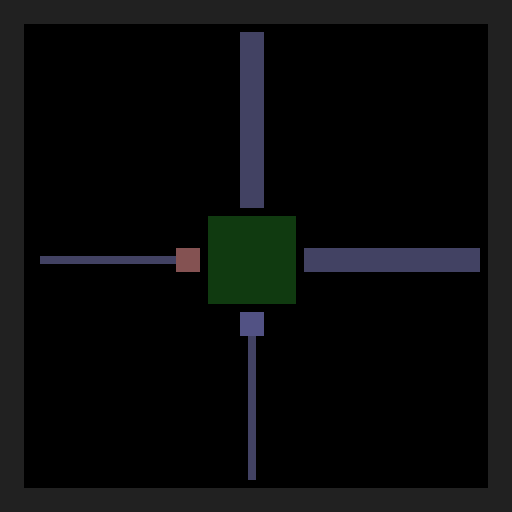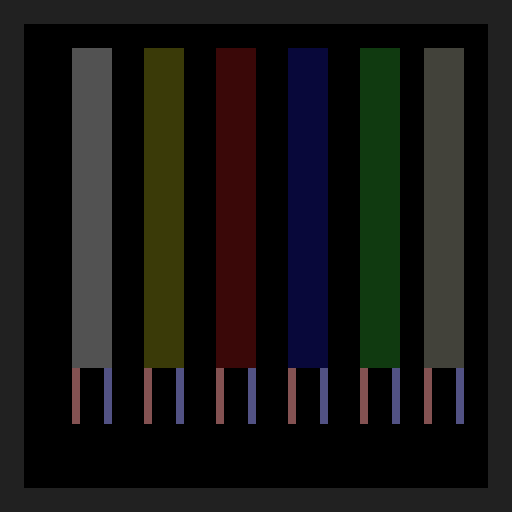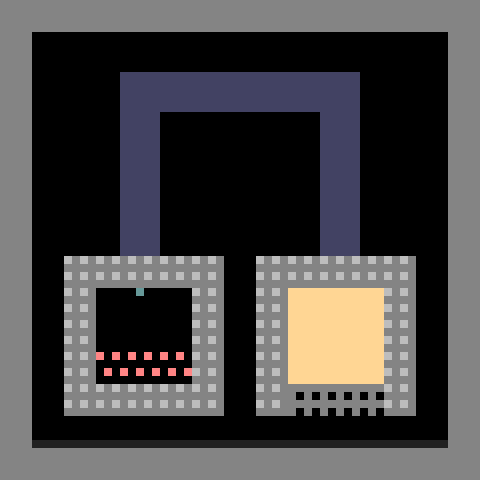Difference between revisions of "Basic electronics"
Awsomedrack (talk | contribs) m (Added the languages box.) |
(Tag: content model change) |
||
| (3 intermediate revisions by 2 users not shown) | |||
| Line 7: | Line 7: | ||
[[File:Animlife.gif]] | [[File:Animlife.gif]] | ||
| − | First, the Spark element finds more metal around it, and then makes it into Spark. Newly created Spark has life of four | + | First, the Spark element finds more metal around it, and then makes it into Spark. Newly created Spark has life of four. When it reaches 0, it turns back into Metal, again with life of 4. When that life hits bottom again, and only then, can metal be sparked once more. In this animation, you can see the second spark wave travelling through the metal, which would normally be invisible. This second wave prevents spark from forming infinite loops (most of the time.) |
Different elements transfer spark different, but the mechanic is essentially unchanged. | Different elements transfer spark different, but the mechanic is essentially unchanged. | ||
Latest revision as of 05:35, 21 July 2022
| Language: | English • 한국어 |
|---|
Electronics are a little arcane no matter how much you know about them, but this covers the easy stuff so listen up. :D
Any fool can place Spark on Metal and observe the spark travelling. But it's helpful to know what's actually going on inside that wire that makes the spark travel along.
First, the Spark element finds more metal around it, and then makes it into Spark. Newly created Spark has life of four. When it reaches 0, it turns back into Metal, again with life of 4. When that life hits bottom again, and only then, can metal be sparked once more. In this animation, you can see the second spark wave travelling through the metal, which would normally be invisible. This second wave prevents spark from forming infinite loops (most of the time.)
Different elements transfer spark different, but the mechanic is essentially unchanged.
Some elements however, are exclusive to how they deal with spark. PSCN and NSCN for example, have a special relationship where as spark can only transfer from PSCN to NSCN, but spark cannot travel from NSCN to PSCN.
This enables you to make your own one-way sparks, to ensure that wires don't destroy their own sparks, even to enable you to make sparks travel in only one direction and make loops.
And it gets more complicated.
Insulated wire conducts to NSCN and PSCN, but not semiconductors or Metal. While at the same time, NSCN and PSCN can conduct to metal freely.
...Now, Switch element is special. Switch element is activated by PSCN, and deactivated by NSCN. While activated, it can transfer sparks to and from some metals.
It's not the only element that does this, though. But it's the only element that deals with spark in this manner. Many elements can be activated or deactivated by PSCN and NSCN.
Last but not least, wall tiles are the oldest form of circuitry. There are many kinds of walls, and they all conduct electricity instantly. They don't work like classic wires though, but they're actually a great deal easier. Detector walls or Metal can be used to conduct current into them, or really any sparked material.






